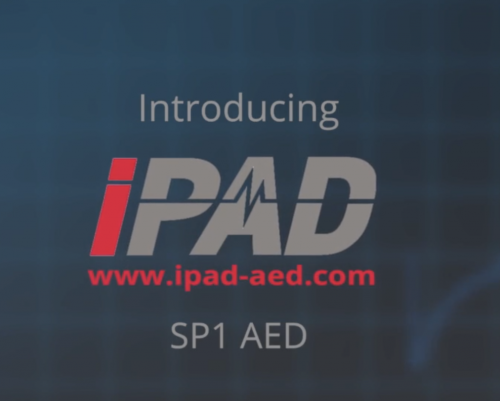CARDIAC ARREST & DEFIBRILLATORS
Cardiac arrest means the heart had stopped suddenly. The person loses conscious within seconds, and breathing is absent or abnormal. Death occurs within a few short minutes without urgent action.
Currently, NHS ambulance services attempt resuscitation from cardiac arrest in around 30,000 people every single year, but fewer than one in 10 people survive to leave hospital.
National efforts to improve survival from cardiac arrest are well underway, with a national strategy led by the British Heart Foundation, Resuscitation Council (UK) and NHS ambulance services.
We are playing our part in improving the chances of survival for our local community.
What is a defibrillator?
An automated external defibrillator, or AED which can also be known as a heart restarter, is a small portable machine that delivers a controlled electrical shock to the heart when someone has had a cardiac arrest, which means their heart has stopped beating. Defibrillators are lightweight, portable, safe and easy to operate. They can be used by anyone, with no training required.
If CPR is started and a defibrillator is used on someone within minutes of a person having a cardiac arrest, their chances of survival leap to as much as 60%.
If we can increase the number of these life saving machines in the community and raise awareness of what they do, encouraging fellow citizens to use when needed, then we can help save lives in our community.
How do I use a defibrillator?*
Defibrillators are very easy to use. Although they donít all look the same, they all function in broadly the same way. You don't need training to use one. The machine gives clear spoken instructions Ė all you have to do is follow them - and it wonít shock someone unless they need it.
If you come across someone who is unconscious, unresponsive, not breathing or not breathing normally, theyíre in cardiac arrest. The most important thing is to call 999 and start CPR to keep the blood flowing to the brain and around the body. After a cardiac arrest, every minute without CPR and defibrillation reduces someone's chance of survival by 10 per cent.
When you call 999, the operator will stay on the line with you until professional help arrives. The ambulance service will give you clear instructions on how to do CPR and will tell you if there's a public access defibrillator nearby.
If you're on your own, don't interrupt the CPR to go and get a defibrillator. If it's possible, send someone else to find one. Keeping CPR going once started is absolutely vital.
Click on the image below toopen a window and watch a short video introducing the iPad SP1 AED.
To use a defibrillator, follow these simple steps:
- Step 1: Turn the defibrillator on by opening or pressing the green button and follow its instructions.
- Step 2: Peel off the sticky pads and attach them to the patientís skin, one on each side of the chest, as shown in the picture on the defibrillator.
- Step 3: Once the pads have been attached, simply follow the instructions and when told stop CPR and donít touch the patient. The defibrillator will then analyse the patientís heart rhythm.
- Step 4: The defibrillator will assess whether a shock is needed and if so, it will tell you to press the shock button. An automatic defibrillator will shock the patient without prompt. Do not touch the patient while they are being shocked.
- Step 5: The defibrillator will tell you when the shock has been delivered and whether you need to continue CPR.
- Step 6: Continue with chest compressions and rescue breaths until the patient shows signs of life or the defibrillator tells you to stop so it can analyse the heartbeat again.
* Information courtesy of the British Heart Foundation.



